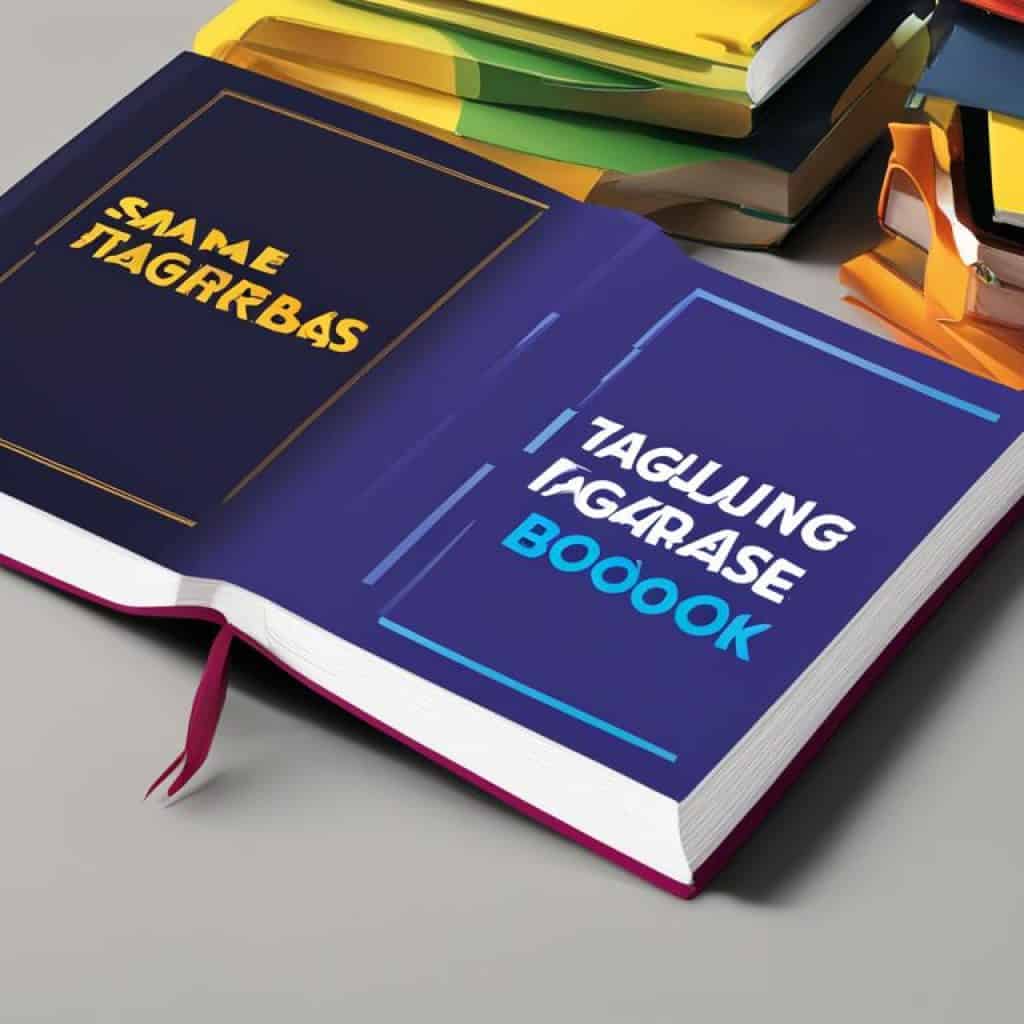Have you ever found it hard to talk well with native Tagalog speakers? Learning how to build and understand Tagalog sentences is crucial. It’s interesting to note that the meaning of Tagalog words can change based on how the sentence is formed. This guide will show you the various types of Tagalog sentences. It will also teach you to use them right in both formal and everyday chats.
Key Takeaways:
- Mastering Tagalog sentences is essential for effective communication with native speakers.
- Understanding the different types of Tagalog sentences is crucial for accurate translation.
- Practicing daily will help you construct Tagalog sentences with ease.
- Tagalog sentence structure is important for contextual meaning.
- This guide will provide examples of formal and casual Tagalog sentences for different situations.
The Importance of Tagalog Sentences in Language Learning
Learning a new language starts with vocabulary and phrases. Yet, to really express yourself and communicate well, you need to know how to make sentences. This is very important in Tagalog.
Tagalog’s unique structure is key for clear meaning. Sentence structure matters a lot because one word can have many meanings.
You can express complex ideas and feelings by making sentences. This helps you have deep talks, connect with natives, and dive into the culture. Mastering sentence construction is key for speaking Tagalog well.
Knowing how to make declarative, interrogative, imperative, and exclamatory sentences is helpful. Each type lets you talk in different ways, fitting many situations.
Take a look at the following example:
Declarative: “Nakapunta ako sa palengke.” (I went to the market.)
Interrogative: “Saan ka pupunta?” (Where are you going?)
Imperative: “Pakisara ang pinto.” (Please close the door.)
Exclamatory: “Ang ganda ng tanawin!” (The view is beautiful!)
Getting to know these sentence types and using them makes you more confident in Tagalog. Remember, making sentences helps you connect deeply with others.
The Role of Language Conversion Services
Need help with Tagalog to English or other translations? Professional services are here to help. They provide accurate translations that keep your message’s true meaning. They can translate documents or help with conversations in real time.
Learning Tagalog for a Multicultural World
As our world connects more, being bilingual is increasingly valuable. Tagalog opens doors to cultural exchange, business, and personal growth. Speaking Tagalog helps you connect with different people and understandings.
Embrace learning Tagalog sentences. It lets you express yourself, connect with others, and enjoy the Filipino language.
Declarative Sentences in Tagalog
In Tagalog, we use declarative sentences to share facts or opinions. They end with a period, showing a completed thought. To communicate well in Tagalog, it’s crucial to understand these sentences.
Declarative sentences are key for sharing information in Tagalog. They help you speak clearly and accurately. No matter if you’re stating a fact, your thoughts, or any statement, they give you the confidence to express your ideas.
Here are a few examples of declarative sentences in Tagalog:
“Pupunta ako sa tindahan.” (I will go to the store.)
“Wala akong magandang damit.” (I don’t have nice clothes.)
“Nakakakita ako ng paru-paro na lumilipad.” (I see a butterfly flying.)
These examples highlight how simple and direct Tagalog sentences can be. This straightforward structure helps ensure your messages are clear.
Learning declarative sentences is crucial, whether for personal or work reasons. It lays a strong base for your language skills, and helps you talk effectively with Tagalog speakers.
Interrogative Sentences in Tagalog
In Tagalog, questions are known as patanong sentences. They’re key for conversations and getting information. They end with a question mark to show a question is being asked.
Asking questions helps us understand things better. By knowing how to ask things in Tagalog, we can talk easily with natives.
Here are some examples of interrogative sentences in Tagalog:
- “Anong destinasyon mo?” (What is your destination?)
- “Marunong ka bang mag-Tagalog?” (Do you know how to speak Tagalog?)
- “Totoo ba ang pag-ibig?” (Is love real?)
These sentences are used to learn about places, language skills, or even love.
Knowing how to ask questions in Tagalog is vital. It helps in both casual chats and serious talks. It lets learners dive deeper into the language.
Choose the Right Interrogative Words
Choosing the right question words in Tagalog is vital. Here are some common ones:
| Interrogative Word | Translation | Example Sentence |
|---|---|---|
| Ano | What | “Ano ang pangalan mo?” (What is your name?) |
| Kailan | When | “Kailan ka pupunta?” (When are you going?) |
| Saan | Where | “Saan ka nakatira?” (Where do you live?) |
| Bakit | Why | “Bakit ka malungkot?” (Why are you sad?) |
| Paano | How | “Paano mo ginawa ito?” (How did you do this?) |
Using the right question words makes our questions clear. It leads to better conversations.
Getting familiar with these words helps in making good questions in Tagalog.
Imperative Sentences in Tagalog
In Tagalog, we use pautos or pakiusap sentences for commands or requests. It’s crucial to be friendly and polite with these sentences. Here are a few examples:
- Palihim mong isara ang pinto. (Kindly close the door quietly.)
- Paglinisan mo na lang mamaya. (Just clean up later.)
- Magluto ka para sa mga bisita. (Cook for the guests.)
Using imperative sentences the right way helps you communicate clearly while being respectful. Whether giving instructions or asking nicely, knowing how to use these sentences matters in Tagalog.
| Imperative Sentence Structure | Example |
|---|---|
| Verb + Object | Pindutin ang pindutan. (Press the button.) |
| Object + Verb | Sulatan mo ang papel. (Write on the paper.) |
| Verb + Object + Adverb | Tawagan mo ako mamayang hapon. (Call me later in the afternoon.) |
| Object + Verb + Adverb | Bilhan mo ako ng mansanas bukas. (Buy me an apple tomorrow.) |
Exclamatory Sentences in Tagalog
Exclamatory sentences, or padamdam sentences in Tagalog, are key for showing strong feelings. They add drama and passion, not just plain statements or questions. They’re crucial for sharing your feelings properly in Tagalog.
Here are some examples of exclamatory sentences in Tagalog:
- Ang ganda ng paligid! (The surroundings are beautiful!)
- Sobra ang tuwa ko! (I am extremely happy!)
- Ganito pala ang feeling ng tagumpay! (So this is what success feels like!)
- Ang galing niya! (He/she is amazing!)
Using these sentences means you also have to show your feelings. Your tone and face play a big role. The stress on words and using exclamation points make your message stronger.
“Ang ganda ng paligid!” the hiker exclaimed, taking in the stunning mountain view.
Exclamatory sentences in Tagalog help share your excitement or joy. They add life and enthusiasm to your talks.
Examples of Exclamatory Sentences
| Tagalog Sentence | English Translation |
|---|---|
| Ang saya ko! | I’m so happy! |
| Ang init ng panahon! | The weather is so hot! |
| Ang sarap ng pagkain! | The food is delicious! |
| Ang galing mo talaga! | You’re really great! |
These examples show exclamatory sentences in Tagalog make your feelings known passionately. Adding them to your conversation makes it more impactful!
Filipino vs. Tagalog: Understanding the Language
Filipino and Tagalog are often mixed up when talking about the Philippines’ national language. But, they are not the same.
Filipino stands as the Philippines’ primary language. It pulls from Tagalog but also includes words from other local languages. This makes it the common language used in schools, media, and daily chats.
Tagalog is mainly spoken around Manila and its nearby areas. It is the core of the Filipino language.
While both languages look and sound similar, they have differences. Filipino borrows from other Philippine languages, making it broader. Tagalog, meanwhile, is more concentrated in certain areas.
Learning Tagalog is a great start for anyone wanting to speak in the Philippines. It’s especially useful in big cities like Manila.
Knowing the difference between Filipino and Tagalog helps learners understand the country’s language scene better. It shows the depth and variety of the Philippine language.

The Rise in Popularity of Tagalog
Tagalog is becoming more popular around the world. Many people now want to learn it. This interest is for both personal and work reasons.
Tagalog has some similarities to Spanish. This is because the Philippines was once a Spanish colony. Many Tagalog words come from Spanish, making it easier for Spanish speakers to learn.
Filipinos love to teach their language to others. They are friendly and patient. This has helped more Tagalog language courses to become available worldwide.
The large number of Filipinos living abroad has also boosted Tagalog’s popularity. They share their culture and language in new places. This lets more people learn Tagalog and connect with Filipino communities.
Learning Tagalog has many benefits. It helps with travel or living in the Philippines. It also helps in work areas like tourism, customer service, and business.
The growing interest in Tagalog shows a bigger trend. People everywhere want to learn about different cultures and languages. Learning Tagalog is a way to connect with others and understand the world better.
Online Tagalog to English Translation Services
Translating Tagalog to English? Online services like Lingvanex have got your back. They offer quick, reliable translations of words, phrases, and full documents. Just a few clicks, and the language barrier is gone.
Lingvanex uses smart technology for its translation engine. This means your translations are precise and understand the context. With Lingvanex, you get translations that truly capture the Tagalog text’s meaning.
These online translation services are easy to access. Use them on phones, tablets, or any smart device. It’s perfect for when you’re traveling, studying, or just surfing the web.
No more manual translations or endless searches. Lingvanex does the work, turning Tagalog into English effortlessly. Discover new opportunities with their service.
Easy Tagalog Phrase Book for Everyday Use and Travel
Lingo Mastery’s Easy Tagalog Phrase Book helps both beginner and intermediate learners. It has over 1,500 common phrases in Tagalog with their English translations.
The book includes a phonetics pronunciation guide for each phrase. This guide helps learners practice pronunciation. It also explains how to say vowels and consonants in Tagalog.
This book is great for daily conversation. It’s perfect for talking to Tagalog speakers anywhere. Whether traveling to the Philippines or chatting with Tagalog speakers, this book is useful.
Sample Phrases from the Easy Tagalog Phrase Book
| English | Tagalog |
|---|---|
| Good morning! | Magandang umaga! |
| How are you? | Kamusta ka? |
| What’s your name? | Ano ang pangalan mo? |
| How much is this? | Magkano ito? |
| Thank you! | Salamat! |
These sample phrases showcase the book’s practical and useful content. The Easy Tagalog Phrase Book is great for everyday use or travel. It will help you speak confidently.
The Easy Tagalog Phrase Book is a handy tool for learning essential phrases. It translates Tagalog to English. This book is a must-have for overcoming language barriers and enjoying the Tagalog language.
Where to Buy the Easy Tagalog Phrase Book
Are you wanting to get better at Tagalog? The Easy Tagalog Phrase Book is great for learners. It has many phrases and their meanings, making it ideal. It’s perfect for boosting your Tagalog speaking skills.
Interested in getting the Easy Tagalog Phrase Book? There are several places to buy it:
- Audible: You can find it on Audible. Here, you can listen to the book. Buying it on Audible also gives you a free PDF. This lets you read and listen at the same time. It’s great if you like learning by both reading and listening.
- Kindle: The Kindle format is on Amazon. This is for those who like reading on devices. You can read the book on your phone, tablet, or Kindle. It’s very convenient.
- Paperback: Want a physical book? The paperback is also on Amazon. This lets you have a book to hold and flip through as needed. Some people prefer this traditional way of reading.
Pick the format that matches how you like to learn. Whether you enjoy audiobooks, reading digitally, or having a book in hand, there’s a version for you. The Easy Tagalog Phrase Book can support your language journey.
Don’t miss this chance to enhance your Tagalog. Get the Easy Tagalog Phrase Book today and start learning.

Conclusion
Mastering Tagalog and its sentence structures is key for good communication. Learning different types of sentences helps in having varied conversations. This way, you’ll be more confident when speaking.
Online translation tools and resources like the Easy Tagalog Phrase Book are very helpful. They make learning faster and simpler. With practice, you can easily talk with native speakers and enjoy the language’s beauty.
Don’t let language barriers hold you back, no matter your level. Starting to learn Tagalog opens up new ways to connect. It lets you explore the rich culture and history of the Philippines.







Add comment